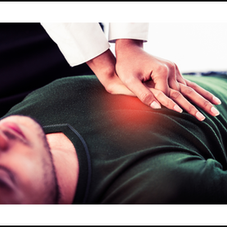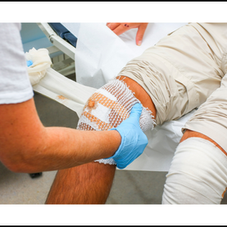Immobilization Syndrome
Immobilization Syndrome is one of the unfortunate consequences of prolonged bed rest and the lack of activity that causes pathological changes in most organs and systems of the body. The lack of activity that may accompany aging reduces one’s endurance to physical effort and may lead to a loss of autonomy. It is reversible if a patient begins to move around as soon as possible. After checking with the nurse or therapist, return to regular activities, as the tolerance level allows.

Elderly are more at risk to developing Immobilization Syndrome and have considerably more difficulty recovering than young people. They tend to move around less due to pain and chronic disease such as diabetes, pulmonary disease and arthritis etc; and the fear of experiencing aches and pains and falling.
MAIN COMPLICATIONS
Interrupting of cutting back normal daily activities such as getting out of bed , walking, sitting, eating seated in a chair, and using the bathroom can cause an imbalance in the body's systems.
HEART AND BREATHING
-Fatigue and shortnessof breath
-Palpitations when resting or with mild exertion
-Dizziness
-Risk of embolism or blood clot in a vein(thrombophlebitis)
-Increased risk of pneumonia
MUSCLES AND BONES ( the most commonly affected)
-Osteoporosis with risk of fracture
-Reduced muscular strength, which can lead to falls and the fear of falling
-Change in upright posture linked to difficulty walking
-Stiffness, aches, and pain
Upper extremities: shoulder joints
Lower extremities: hip joints
*These joints are the most commonly affected joints due to immobilization (arthrogenic contracture).
NERVOUS SYSTEM
-Disorientation: not knowing the day of the week or where one is, not recognizing people
-Periods of wakefulness during the night and sleepiness during the day
-Isolation or anxiety, which may lead to depression
-Loss of balance
-Confusion, delirium
URINARY SYSTEM AND DIGESTION
-Dehydration, malnutrition
-Urinary and bowel incontinence
-Urinary retention and infection
-Constipation, fecal impaction
SKIN
-Risk of sores mainly on the buttocks
Basic Principles in the Prevention and Treatment of Contractures
PREVENTION
-Proper positioning
-ROM exercises ( active or passive)
-Early immobilization and ambulation
Immobilization Syndrome is reversible if a patient begins to move around as soon as possible.
Activities for patient as tolerated:
-Sit in a chair for meals and rest periods.
-Do grooming at the sink or take a bath or shower.
-Shave or put on makeup as you would at home.
-Get dressed if don’t have a test scheduled.
-Get up to go to the bathroom.
-Walk according to his capacity.
-Ask to be accompanied or to leave room.
AVOID
-Staying in bed all day.
-Prolonging naps unnecessarily.
-Going to bed for the night too early
"One week of immobilization may require three weeks of recovery, particularly in an older person"
TREATMENT
-Passive ROM exercises with terminal stretch at least 2x a day
-Prolonged stretch using low passive tension and heat
-Progressive (e.g. Dynamic) splinting
-Treatment of spasticity (motor point or nerve block)
-Surgical release (e.g. Tendon lengthening, osteotomies, joint replacement)
"For a good number of older people, Immobilization Syndrome results in a longer hospital stay, rehospitalization, a change in living environment, and greater risk of mortality."
SO LET THEM MOVE-WATCH THIS VIDEO SHOWING A FUN AND ENERGETIC DANCING GRANDFATHER!
Reference:
http://www.chus.qc.ca/




















